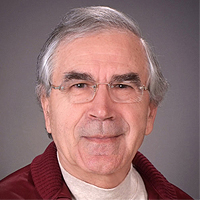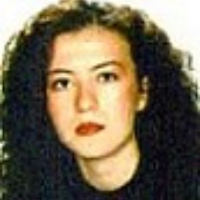Percutaneous abdomino-pelvic abscess drainage in complicated Crohn’s disease
Published on: 5th October, 2020
Purpose: Percutaneous abscess drainage (PAD) is the first-line approach for abscess in Crohn’s disease (CD) since it procrastinates or avoids surgery especially in postoperative abscesses [within 30 days post-operative (p.o.)]. We retrospectively evaluated the effectiveness, complications and outcome after PAD in postoperative and spontaneous abscesses and factors influencing the outcomes.
Methods: We performed PAD in 91 abscesses, 45 (49,5%) postoperative and 46 (50,5%) spontaneous.
We defined the overall success (OS) as clinical (CS) and technical success (TS) when imaging documented the resolution of the abscess with no surgery within 30 days.
Conversely, patients without abscess at the time of surgery, were considered as TS but clinical failure (CF).
We also analyzed the overall failure (OF) defined as CF with or without technical failure (TF).
Overall technical success (OTS) was OS plus TS. Complications were classified as major and minor according to the Interventional Radiology Criteria.
Results: In postoperative abscesses we found 91% OS, 9% OF, no TF and 100% OTS.
In spontaneous abscesses we found 33% OS, 67% OF, 6.4% TF, 95,6% OTS.
A total abscess resolution was achieved in 97,8% of patients. No major complication occurred; only 1 case of minor complication. Factors statistically influencing the outcome were postoperative vs spontaneous collections (OF: 9% vs. 67%, p < 0.0001), multiloculated vs uniloculated collections (OF: 38% vs. 1%, p < 0.0001) and upper abdominal vs lower location (OF: 13% vs. 25%, p <0.05).
Conclusion: Our data confirms the safety and effectiveness of PAD even in cases needing surgery within 30 days; most remarkable, PAD allows avoidance of early reoperation in almost all the patients with postoperative abscess.
Features of Interferon and Cytokine Status in Atopic Dermatitis
Published on: 29th May, 2017
OCLC Number/Unique Identifier: 7317651633
The insufficiency of interferon production and the cytokine imbalance in patients with atopic dermatitis, especially in combination with persistent herpes virus infection, has been identified. The expediency of the use of interferon inducer Cycloferon in the treatment of chronic atopic dermatitis has been shown.
Biomarkers in Enteropathic Arthritis
Published on: 4th June, 2020
OCLC Number/Unique Identifier: 8616347490
Inflammatory Bowel Disease (IBD)-associated arthritis is called Enteropathic Arthritis (EA) which is classified among the group of Spondyloarthritis (SpA), because its presentation is variable. The current trend is to classify them as autoinflammatory rather than autoimmune diseases, since no antibodies have yet been identified. The study of biomarkers (BM) will help us with early identification and hence, to provide treatment in the early stages, prior to radiographic progression, which will enable prompt identification of the disease phenotype. 42 patients diagnosed with IBD were included, of which 48% were females; the mean age of the study group was 48.12 ± 5.02 (95% CI). The average time of evolution of disease was 37.57 ± 14.28 months; most patients referred to the rheumatologist had a diagnosis of ulcerative colitis (83%). According to our analysis, we were able to determine that the three most significant variables influencing the development of sacroiliitis were: Lactoferrin, ANCA and HLA B27 (p < 0.5). The variable that can be ruled out because of its almost neglectable contribution was fecal calprotectin.
Phenibut Overdose in Combination with Fasoracetam: Emerging Drugs of Abuse
Published on: 17th December, 2016
OCLC Number/Unique Identifier: 7317592197
The widespread availability of non-traditional dietary supplements and pharmacologically active substances via the Internet continues to introduce mechanisms for inadvertent toxidromes not commonly seen. Consumers are virtually unrestricted in their ability to acquire products purporting augmentation of normal physiology for the purposes of enhancement, recreation, and/or potential abuse. The safety profiles at standard or toxic doses remain largely unknown for many agents that can be purchased electronically. We report a case of mixed toxicity related to phenibut and fosaracetam, both of which are readily available for consumer purchase from online retailers. Written and verbal consent was obtained for this case presentation.
Atopic Conjunctivitis in Children: Influence of Treatment with Topical Cyclosporin 0.05% in the Quality of Life
Published on: 31st January, 2017
OCLC Number/Unique Identifier: 7317598595
Introduction: Forty-six per cent children have allergic rhinoconjunctivitis (Allergologica 2005).
Working hypothesis: Ocular topical cyclosporine improves the quality of life for these patients.
Material, methods, design: 2-year prospective study (2015-16), 40 patients with topical corticosteroids without improvement, followed 20 and 20 switched to corticosteroids cyclosporine 0.05%. Interview with Quality of Life Questionnaire in Children with rhinoconjunctivitis (PRQLQ) before and at the end of treatment. Mean age of 10.3 years with 60% male-40% female. Treatments were applied from January to March. There were 15 questions divided into two blocks. Children responded using a card with responses rated from zero (not bothered at all) to 6 (quite upset).
Results: Before the 100% reported that, the itching was very bothersome. In the group of 40 children, 80% showed symptoms of epiphora and 60% showed symptoms of ocular inflammation. 100% complained of significant discomfort in rubbing their eyes, 30% did not like to take medications. Headaches affected 20%. 100% stated that they cannot play normally. 80% showed decreased concentration in class.
Continuing with corticosteroids did not show statistically significant changes.
Patients with cyclosporine improved the results by 3 points, with decreased itching, tearing, swelling, pain, eye rubbing, medication and headaches. In the 2nd questionnaire there was limited variation in the results related to fatigue, malaise, and irritability but with substantially improved balance of sleep, insomnia and concentration at school.
Conclusion: Cyclosporine A is a cyclic polypeptide calcineurin inhibitor developed from the fungus Tolypocladium inflatum. The first dilution was 2% but it is currently used at a dilution of 0.05% and recent publications suggest nanosuspensions. Our study showed improvement in parameters related to symptoms, especially itching and lower improvement of psychological aspects, this achieves a better quality of life for children and more willingness to adhere to the treatment.
Demographic profile & correlation between retinal exudates and hematological parameters in leukemic patients
Published on: 4th June, 2021
OCLC Number/Unique Identifier: 9124548296
Background: Leukemia is frequently associated with fundoscopic abnormalities. However, no organized effort has been made for analyzing leukemic retinopathy in our country. This study was done to observe the demographic profile and correlation between fundoscopic findings of retinal exudates and hematological parameters in leukemic patients.
Materials and Methods: The study was a hospital-based descriptive cross-sectional study among 50 leukemic patients in Medicine and Oncology departments of Bangladesh Medical College and Hospital (BMCH) from May, 2020 to October, 2020. Fundoscopic examination was done which was reviewed by an ophthalmologist. Collected data was analyzed statistically by using SPSS-17 (Chicago, Illinois).
Results: Among 50 leukemic patients’, the fundal lesion was detected in 32 patients (64%), retinal exudates are rare. Only 3 patients (6%) had exudates while others (29 patients, 58%) have retinal hemorrhages. Exudates did not show any statistically significant relationship with types of leukemia (p value = 0.53). There was no statistically significant association between fundal exudates and high white cell count (p = 0.56) or low hemoglobin level (p = 0.11) or low platelet level (p = 0.11).
Conclusion: This study has identified retinopathy occurring frequently in leukemic patients. Therefore, an adequate attention should be paid at fundoscopic evaluation while treating leukemic patients.
Autoimmune hemolytic anemia in COVID-19 patients, the « transmissible » direct Coombs test
Published on: 7th April, 2021
OCLC Number/Unique Identifier: 8999916981
Background: Like other viruses, the SARS-CoV-2 (severe acute respiratory syndrome coronavirus 2) appears to be responsible for several autoimmune complications. The occurrence of autoimmune hemolytic anemia has been described in several case reports. This AIHA was also noticeable by the important number of blood transfusions required for COVID-19 (coronavirus disease 2019) patients. By investigating RBC coating autoantibodies, this article attempts to clarify the autoimmune aspect of the anemia in the context of SARS-CoV-2 infection.
Results: A large population of COVID-19 patients selected at Saint-Luc University Hospital showed an average of 44% DAT positivity. In this population, the intensive care patients were more prone to DAT positivity than the general ward patients (statistically significant result). The positive DAT appeared « transmissible » to other RBCs via COVID-19 DAT-positive patient’s plasma.
Conclusion: The strongest hypothesis explaining this observation is the targeting of cryptic antigens by autoantibodies in COVID-19 patients.
A study of coagulation profile in patients with cancer in a tertiary care hospital
Published on: 10th February, 2021
OCLC Number/Unique Identifier: 8999933050
The complicated process of cancer triggers many physiological systems like vascular endothelial functions and hemostasis, which signifies the increased risk of thrombosis, which triggers thromboembolic events resulting in increased mortality and morbidity [1-3]. Tumorigenesis contributes by activation of coagulation around the perivascular region [4].
Blood disorders: Touching of erythrocytes
Published on: 30th December, 2020
OCLC Number/Unique Identifier: 8999929058
In general, Erythrocytes may referred to as corpuscle (Red Blood Cells). These erythrocytes will play a significant role in our body. It carries the element round the body and produce dioxide back to lungs. It acquire the element from the lungs then move towards the guts wherever the pure blood is then passed round the body. Erythrocytes covers nearly 1/2 your blood. The mature human erythrocytes is small, Circular, and biconcave; it seems dumbbell-shaped at Look.
Transcatheter arterial chemoembolization combined with molecular targeted therapy for a patient with hepatocellular carcinoma with intrahepatic metastasis and main portal vein tumor thrombus: A case report and literature review
Published on: 2nd June, 2020
OCLC Number/Unique Identifier: 8616348339
Hepatocellular carcinoma (HCC) is characterized by high morbidity, high recurrence, and high mortality rates. In China, the morbidity of HCC is fifth among all malignant tumors and HCC is the third most common cause of cancer-related deaths. Most HCC patients also have liver cirrhosis. Surgery is the sole curative method for HCC; however, many patients are diagnosed with HCC during its advanced stages so radical resection can no longer be performed. Therefore, the proportion of patients who undergo radical hepatectomy is less than 30%. Patients with mildly advanced HCC cannot undergo hepatectomy and thus transcatheter arterial chemoembolization (TACE) and/or biological targeted therapy are alternative options. However, data on the effects of TACE therapy or biological targeted therapy are limited. Therefore, an investigation of multimodal and individualized treatments is critical to ensure the best treatment. In June 2018, we treated an advanced HCC patient with multiple metastases and right portal vein tumor thrombus. The patient exhibited partial remission after undergoing treatment with TACE and crizotinib capsules for 1 month. The case and a literature review are reported here.




